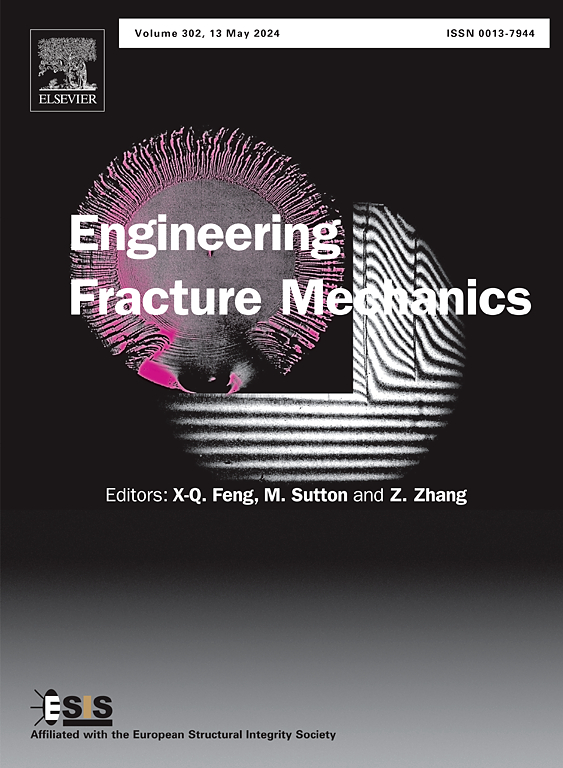A phase-field study on thermo-mechanical coupled damage evolution and failure mechanisms of sintered silver interconnections
IF 4.7
2区 工程技术
Q1 MECHANICS
引用次数: 0
Abstract
Sintered silver paste has emerged as one of the most promising green packaging interconnection materials in electronic packaging due to its combination of low-temperature processing and high-temperature service capabilities. At the microscale, sintered silver exhibits random porous structures influenced by sintering processes, leading to various fracture issues under complex operating conditions, where the mechanical reliability is significantly influenced by thermo-mechanical loading during service. This study establishes a thermo-mechanical coupled phase-field model incorporating mixed tensile–shear failure modes to investigate the mechanical behavior and fracture evolution of random porous structures reconstructed from SEM images of sintered silver. The phase-field approach effectively captures crack initiation and propagation without explicit crack tracking by introducing a regularized description of discontinuities. Numerical predictions of elastic modulus and tensile strength show good agreement with experimental results under various loading conditions, including tensile, shear, and end-notched flexure (ENF) tests. Simulations of crack propagation under thermal and shear loading conditions reveal distinctive crack patterns and complex crack networks. The proposed approach provides an efficient and reliable method for simulating the mechanical behavior and failure mechanisms of sintered silver solder with random porous structures, offering valuable insights for improving electronic package reliability.
烧结银互连材料热-力耦合损伤演化及破坏机制的相场研究
烧结银浆由于兼具低温加工和高温服务能力,已成为电子封装中最有前途的绿色封装互连材料之一。在微观尺度上,烧结银在烧结工艺的影响下呈现出随机多孔结构,在复杂的运行条件下导致各种断裂问题,在使用过程中,热机械载荷对其机械可靠性有显著影响。本文建立了包含拉伸-剪切混合破坏模式的热-力耦合相场模型,研究了烧结银的SEM图像重建的随机多孔结构的力学行为和断裂演化。相场方法通过引入不连续的正则化描述,有效地捕获裂纹的起裂和扩展,而不需要明确的裂纹跟踪。弹性模量和抗拉强度的数值预测与各种加载条件下的实验结果吻合良好,包括拉伸、剪切和端缺口弯曲(ENF)试验。热剪切加载条件下的裂纹扩展模拟揭示了独特的裂纹模式和复杂的裂纹网络。该方法为模拟具有随机多孔结构的烧结银焊料的力学行为和失效机制提供了一种高效可靠的方法,为提高电子封装的可靠性提供了有价值的见解。
本文章由计算机程序翻译,如有差异,请以英文原文为准。
求助全文
约1分钟内获得全文
求助全文
来源期刊
CiteScore
8.70
自引率
13.00%
发文量
606
审稿时长
74 days
期刊介绍:
EFM covers a broad range of topics in fracture mechanics to be of interest and use to both researchers and practitioners. Contributions are welcome which address the fracture behavior of conventional engineering material systems as well as newly emerging material systems. Contributions on developments in the areas of mechanics and materials science strongly related to fracture mechanics are also welcome. Papers on fatigue are welcome if they treat the fatigue process using the methods of fracture mechanics.

 求助内容:
求助内容: 应助结果提醒方式:
应助结果提醒方式:


